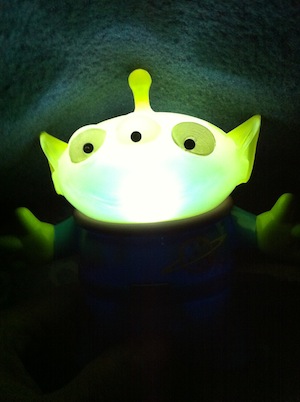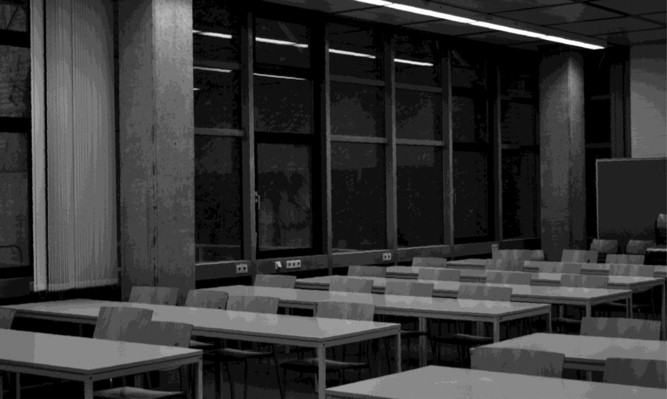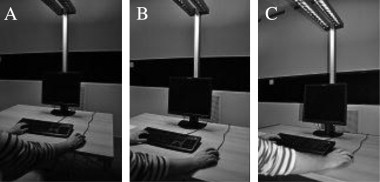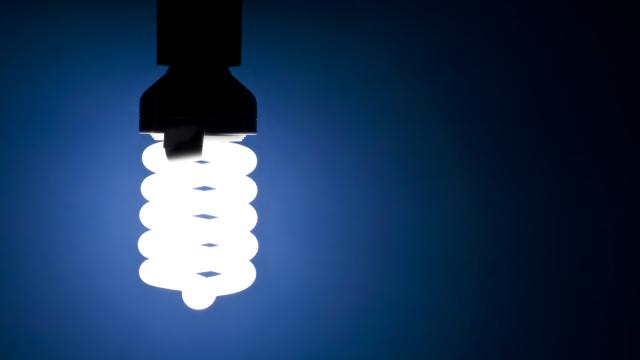A new study has found that dim lighting may actually boost your creativity. But here’s the best part. The test subjects’ creativity was assessed by having them make up a science-fiction story and draw aliens. Yes, really.
The study, which appears in the latest issue of the Journal of Environmental Psychology, was designed to explore the role of environment on workplace productivity.
“Driven by the notion that employee creativity fosters organizational productivity, researchers have been striving to identify antecedents of creativity,” write study authors Anna Steidle and Lioba Werth, of the University of Stuttgart and University of Hohenheim, respectively. To this end, the authors note, much attention has been paid to “personality variables, organizational climates and situational factors.” And yet, say the pair, the physical work environment, itself “and, hence, architecture’s and design’s potential to contribute to creativity-supportive workplaces” has gone relatively unexplored.
Drawing Aliens for Science
So Steidle and Werth designed a series of experiments, wherein undergraduates were asked to solve “creative insight problems” and generate “creative products” in a variety of lighting conditions. Creative insight problems are pretty run-of-the mill, and require test subjects to find a creative solution to a problem by seeing it from a new angle. Creative generation tasks, however, are a whole different kettle of fish, requiring test subjects to “imagine and draw original creatures from another planet.”
The rating process for alien-imagination warrants a lengthy citation and is included here, partly to illustrate how something as seemingly subjective as creativity is measured in an experimental setting, but mostly because aliens:

To assess creative performance, participants then completed the structured imagination task (Ward, 1994). They were instructed to “imagine going to another galaxy in the universe and visiting a planet very different from earth” and to spend 7 min drawing a picture of an alien creature that is local to this planet. Participants were given a blank sheet of paper on which they were to draw the aliens they encounter.
Two independent coders, who were blind to the conditions, coded participants’ drawings following the procedure proposed by Maddux and Galinsky (2009). The drawings were coded in terms of (a) overall creativity, (b) similarity to earth creatures, and (c) atypicality of features. Overall creativity was measured on a scale of 1 (not creative at all) to 5 (extremely creative). Similarity to earth creatures was measured with two items: (1) how similar the aliens were to earth creatures and (2) the extent to which participants took general earth animals into account when making their drawings (scale from 1 = not at all to 5 = very strongly). The number of atypicalities was assessed on five items referring to sensory organs and on four items referring to body features. Sensory organs and body features were considered atypical if (1) they were lacking (i.e., eyes and legs), (2) had atypical numbers (e.g., five legs), (3) demonstrated an uncommon configuration (e.g., legs connected to the head), and (4) had an uncommon function (e.g., nutrition via legs). Additionally, sensory organs were considered atypical if (5) they had an uncommon ability (e.g., X-ray eyes). The two coders’ ratings reached an acceptable degree of reliability for overall creativity (α = .79), similarity to earth creatures (alphas between .71 and .73), and atypicality of features (alphas between .84 and .95) which are also comparable to previously reported reliabilities (alphas between .79 and 1.00; Maddux & Galinsky, 2009). Thus, as Maddux and Galinsky (2009) suggested, we averaged the ratings to obtain overall scores for creativity, similarity, and atypicality.
ANYWAY. Test subjects were asked to problem solve and draw aliens under a variety of lighting conditions in a pretty typical classroom setting (see below). Some students were asked to problem solve in dim light (150 lux), others in neutral light (500 lux, the “recommended lighting level for office work”), and others still in bright light (1500 lux). In additional studies, test subjects were primed to merely think about lighting conditions prior to problem-solving, by having them “describe a situation in which they had either been in a bright or dark location”.

Above: Photograph of test room for dim, neutral and bright lighting conditions, via Steidle and Werth.
The upshot? Not only did the test subjects working in dim lighting conditions demonstrate improved creative performance, those primed to merely think about darkness did, as well.
Why? An additional study, wherein test subjects were asked to rate how they perceived themselves during creative tasks, found darkness — real or imaginary — inspired feelings of “freedom, self-determination and reduced inhibition” in the experimental participants. “Based on the present results,” write Steidle and Werth, “we conclude that priming darkness and dim illumination have similar effects on creative performance due to their shared link to freedom from constraints and the concomitant explorative processing style.”
Caveats

The authors make note of two big exceptions to the Dimmer-is-Better school of creativity.
The first has to do with lightsource. In a followup experiment, the researchers employed upright floor luminaires to provide indirect, non-uniform light instead of the direct, uniform, overhead lighting used in previous trials. (According to the researchers, “indirect and non-uniform lighting from desk luminaires or floor luminaires is typically preferred in places with an informal atmosphere”.) In this new setting, there was no significant effect observed on perceived freedom from constraints, and “the darkness-related increase in creativity disappeared.” This, the researchers continue, “may explain why Abraham Lincoln, who famously studied by candlelight, never produced any great works of science fiction.”*
The second has to do with the creative process as a whole. “Although idea generation is seen as a core step in creative achievement,” write the researchers, “innovation also requires the evaluation of ideas.” In other words: innovation is a stage-dependent endeavour, and different stages require different mental skill sets. To test this assumption, Steidle and Werth had participants perform creativity tasks and analytical thinking tasks in a variety of lighting environments. As expected, creativity fluorished in the dim conditions relative to lit ones — but analytical performance was best in a brightly lit room.
The key to maximising innovative output, then (from the perspective of interior lighting, anyway), appears to be adaptive lighting that can change according to the task at hand. After all, the researchers conclude, “creativity may begin in the dark, but it shouldn’t end there.”
The researchers’ findings are published in the latest issue of The Journal of Environmental Psychology.
*Note: The researchers DID NOT REALLY SAY THIS ABOUT ABRAHAM LINCOLN. But they probably should have.
Pictures: Shutterstock, Pixar Times, Steidle and Werth

Comments